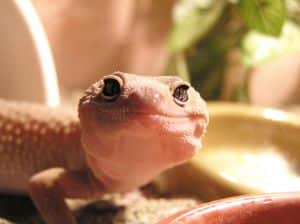Check out various substrate environments for your pet snake or lizard.
All of the mixes below should be prepared several days to a week ahead of time, slightly moistened and allowed to rest in an open container before use.
Basic Forest Planting Mix
- 2 parts partially composted leaves. (Partially composted leaves consist of the dead leaf litter in various states of decomposition found around the base of trees and scrubs. The best kinds of leaves for this are live [scrub] oak, alder, elm, birch, aspen, poplar, beech, apple, ash, holly and privet.)
- 2 parts medium grade orchid bark, Xerimulch or similar bark product
- 1 part ground coconut husk fiber (coir), or ½ part coconut husk fiber and ½ part ground palm
Chunky Forest Vivarium Planting Mix
- 1 part basic forest vivarium planting mix (from above)
- 2 parts coconut husk chips
Basic Desert Planting Mix
- 2 parts natural sand. (Natural sand is made of degraded rock and is composed of rough, irregular particles of many sizes. You can opt to use commercial sand made from pulverized rock, such as decomposed granite or ground sandstone. Do not use limestone sand, which can be very alkaline, or beach sand, which is high in salts.)
- 1 part ground coconut husk fiber
- ½ part fully composted leaves. (Fully composted leaves are very fine, dark and crumbly leaf material from the lower layers of leaf litter that collect around the base of trees.)
Fertilizer for Basic Forest, Chucky Forest and Basic Desert Planting Mixes
- Cottonseed meal – 3 tablespoons per gallon or 6 cups per 30 gallons
- Bone meal – 1 tablespoon per gallon or 2 cups per 30 gallons
- Blood meal – 1 tablespoon per gallon or 2 cups per 30 gallons
- Ironite (similar trace mineral product) – 1 tablespoon per gallon or 2 cups per 30 gallons
- Agricultural lime derived from a source such as oyster shell – 1 slightly heaping teaspoon per gallon or a generous 2/3 cup per 30 gallons. (A desert planting mix that is already somewhat alkaline should not contain agricultural lime. Gypsum can be used instead. To test the alkalinity of your desert sand, sift out some of the fine material, mix it with distilled water to form a thin mud and allow it to sit for a day. Use a strip of litmus paper to read the pH, or pour off some of the top water and test it using an aquarium pH test kit.)
Basic Bog Planting Mix
- 2 parts natural sand (This sand should be washed several times to remove the dust.)
- 1 part ground coconut husk fiber
- ¼ to ½ part fully composted leaves
- Quality commercial pond plant fertilizer formulated for use in fish ponds (use ¼ of recommended amount)
- Inoculation of bottom medium from a healthy, established aquarium or pond



